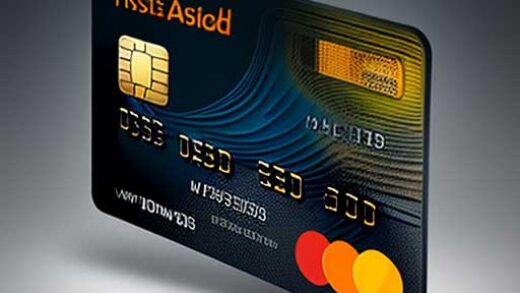What is a coin burn?
The act of permanently removing a portion of a cryptocurrency from circulation is called coin burning. Coin burning became a hot topic among crypto enthusiasts after the London Hard Fork upgrade, which implemented Ethereum (ETH) token burning.
Cryptocurrency tokens are burned by sending them to an unusable wallet address known as a “burn” or “eater” address. This permanently removes the tokens from circulation, and no one can access or assign the address. Anyone with cryptocurrency can burn it, but it is not recommended to do so without careful consideration, as it is equivalent to throwing money away.
In most cases, the decision to brn a particular quantity of cryptocurrency is made by the developers of the cryptocurrency. Coin burning reduces the supply, which makes the remaining tokens more scarce. While this can potentially lead to an increase in price and profit for investors, it is not a guarantee.
It is important to note that coin burning is not a foolproof method to increase the value of a cryptocurrency, and some believe it provides little to no benefit. Additionally, coin burning can be used to deceive investors, as developers may claim to be burning tokens when they are actually sending them to a wallet they own. Furthermore, developers may use coin burning to hide whales that own significant amounts of a cryptocurrency.
Article structure:
What does buyback mean in cryptocurrency?
In the world of cryptocurrency, buyback is a popular technique used by companies to increase the value of their tokens. This technique involves a company purchasing its own crypto assets from the market, which helps in reducing the supply of tokens in circulation and, in turn, increases the overall value of the tokens.
This technique is similar to a stock buyback in the traditional markets, where the company purchases its own shares to reduce the total number of shares available in the market. In the cryptocurrency market, buybacks are often used along with token-burns to limit emissions and drive prices.
In contrast to buybacks, token-burns are a process where a company removes some of its tokens from circulation permanently by sending them to a zero address, essentially erasing them from existence. The tokens can be taken from the current pools or repurchased from the community. The aim of token-burns is to adjust the demand and supply dynamics to influence the price of the tokens.
Both buybacks and token-burns aim to increase the value of tokens by reducing their supply. However, the mechanism and end goals of these techniques are different. These techniques are often employed by companies to develop a clear, functional, and profitable value proposition that attracts investors and demonstrates tangible benefits within the cryptocurrency ecosystem.
How did coin burning start?
The practice of coin burning has been around for a while, and it is believed to have been inspired by stock buybacks, which have been in use for a long time. Coin burning has gained popularity in recent years, with several cryptocurrencies, including Binance Coin (BNB), Bitcoin Cash (BCH), and Stellar (XLM), using it to reduce supply and increase prices.
One of the reasons for the growing popularity of coin burning is that it allows new cryptocurrencies to start at low prices and then artificially increase their value after securing investments. This is achieved by starting with a large token supply at a low price, attracting investors, and then burning billions of tokens to increase the price in the future.
The Binance buyback and burn, which is carried out through pre-programmed smart contracts, reduces the BNB token supply by using 20% of the exchange’s revenues to buy back and burn BNB tokens every quarter. In contrast, with traditional stock buybacks, investors are often unclear about whether the corporation will buy back shares or pay dividends.
The Shiba Inu (SHIB) burn initiative is another example of a crypto burn that involves burning a set percentage of profits or a given monetary amount into the official SHIB burn wallet. Overall, coin burning has become a popular tool in the cryptocurrency world to manage token supply and increase prices.
How do buybacks and burns work?
The Proof-of-burn (PoB) consensus mechanism allows miners to burn virtual currency tokens, thereby reducing the number of tokens in circulation. PoB is one of several consensus mechanisms that blockchain networks employ to ensure that all participating nodes agree on the network’s legitimate state.
Unlike other consensus mechanisms, PoB does not require miners to waste energy to verify transactions. Instead, miners burn a certain number of tokens to earn the right to write blocks. The tokens are sent to a burner address, which destroys them, thereby reducing the token supply.
However, the PoB mechanism can lead to centralization since larger miners can burn a massive number of tokens, affecting price and supply. To prevent this, a decay rate is often used to reduce individual miners’ capacity to validate transactions.
In contrast to coin burning, which permanently removes tokens from circulation, a buyback involves purchasing tokens from the community and holding them in the developers’ wallets. The tokens are not permanently destroyed, unlike in coin burning.
Good to know: DeFi and Web3: Breathtaking features that you don’t know
What are the pros and cons of crypto buybacks?
There are several advantages and disadvantages of cryptocurrency buybacks that issuers and investors should be aware of.
Advantages:
- Reducing supply: One of the primary benefits of a buyback is that it reduces the number of tokens in circulation, which can increase demand and ultimately raise the price of the cryptocurrency.
- Enhancing investor confidence: A buyback can demonstrate to investors that the project is financially stable and willing to invest in its own success, which can increase investor confidence in the project.
- Flexibility: Unlike traditional buybacks, crypto buybacks can be executed automatically and transparently through smart contracts, making them faster and more efficient.
Disadvantages:
- Lack of regulatory oversight: There are few regulations in place to govern cryptocurrency buybacks, which can make them more vulnerable to fraud and abuse.
- Manipulation: Buybacks can be used to artificially inflate the price of a cryptocurrency, which can create a false sense of demand and cause investors to overvalue the token.
- Misaligned incentives: Buybacks can be used as a tool for insiders to buy back tokens at a lower price and then profit when the price rises. This can create a conflict of interest between the insiders and the broader community of investors.
- Reducing liquidity: If a significant portion of a cryptocurrency’s tokens are bought back and removed from circulation, it can reduce the liquidity of the token and make it more difficult for investors to trade it.
In summary, while buybacks can have some benefits for cryptocurrency projects and investors, there are also risks and potential downsides to consider. It is important for issuers and investors to carefully evaluate the potential impact of a buyback before deciding to participate.
Is implementing buybacks a viable strategy?
Businesses have been using self-investment to stabilize prices or fight inflation for a long time in traditional financial markets. Many crypto projects, including Binance and Nexo, have conducted buybacks to modify the number of their assets in circulation. Nexo’s buyback, for example, aimed to address the undervaluation of the asset, and they decided to reduce the number of tokens in circulation to correct the market price.
In the cryptocurrency world, buybacks operate similarly to their traditional financial market counterparts. They can have various motives, but the end goal is usually a significant increase in the asset’s value. While buybacks can provide a short-term boost to the asset’s value, they do not address the underlying issues affecting the market. Therefore, it is debatable whether buybacks are a sustainable long-term solution for crypto projects.
Good to know: Bitcoin miners are support the development of sustainable energy sources



